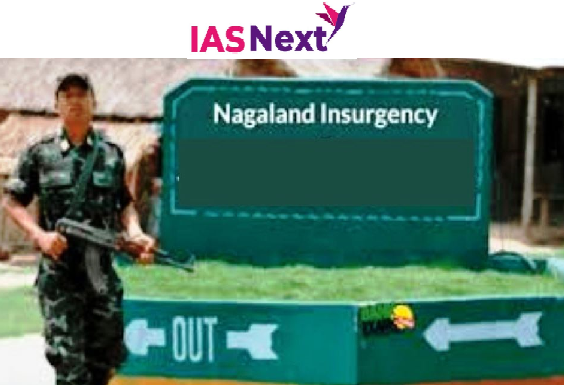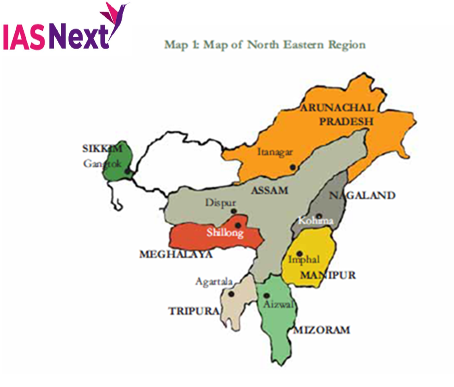CURRENT AFFAIRS
Get the most updated and recent current affair content on Padhaikaro.com
India’s oldest insurgency in Nagaland (North East India)
- IAS NEXT, Lucknow
- 01, Nov 2021

Let us understand the problem in detail and tell you about age-old history of Naga Insurgency.
Nagaland continues to witness one of the longest and bloodiest standing insurgencies—one that has existed longer than the Kashmir insurgency.
The political dispute has spanned over six decades, and to understand it, it is important to understand the ethnicity, culture, history, geography, and demography of the Naga tribes.
Nagaland is one of the smallest states in India, bordered by the state of Assam to the west, shares a very important border with Arunachal Pradesh to the north, and then Manipur to the south and Myanmar to the east. The Nagas accuse the British of having betrayed them, leaving their fate in the hands of India and Burma.

The state of Nagaland was divided into two administrative areas: one half under India and another under Burma, now known as Myanmar. This partition was so indiscriminate that the house of the Angh—the king—in Longwa village was said to be partitioned, with his bedroom in India and his kitchen in Burma.
Nagaland’s demand for permanent peace has shaped a common political and cultural identity. At first, the state was never part of British India, and Indian cultures and religions have been alien to them.
It was only the British missionaries that introduced Christianity to a region that practiced a multitude of folk and animist religions genealogically distinct from the practices common to India.
The British first entered the Naga Hills in 1832 under an expedition led by Captain Francis Jenkins and Lieutenant Robert Boileau Pemberton.
The Naga Hills became part of British India in 1881.
The effort to bring scattered Naga tribes together resulted in the formation of the Naga Club in 1918.
The Naga club rejected the Simon Commission in 1929 and asked them “to leave us alone to determine for ourselves as in ancient times”.
The club metamorphosed into the Naga National Council (NNC) in 1946.
Under the leadership of Angami Zapu Phizo, the NNC declared Nagaland as an independent State on August 14, 1947, and conducted a “referendum” in May 1951 to claim that 99.9% of the Nagas supported a “sovereign Nagaland”.
On March 22, 1952, Phizo formed the underground Naga Federal Government (NFG) and the Naga Federal Army.
The government of India sent in the Army to crush the insurgency and, in 1958, enacted the Armed Forces (Special Powers) Act.
In 1975, when the government signed the Shillong Accord, under which this section of NNC and NFG agreed to give up arms.
A group of about 140 members led by Thuingaleng Muivah, who was at that time in China, refused to accept the Shillong Accord and formed the National Socialist Council of Nagaland (NSCN) in 1980.
Muivah also had Isak Chisi Swu and S S Khaplang with him.
In 1988, the NSCN split into NSCN (IM) and NSCN (K) after a violent clash.
While the NNC began to fade away, and Phizo died in London in 1991, the NSCN (IM) came to be seen as the “mother of all insurgencies” in the region.